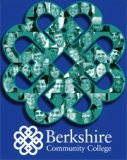Dr. Doubleday Awarded Grant for Integrating iPads into Gross Anatomy
By Lucia Gonzalez
Dr. Alison Doubleday, Assistant Professor, Oral Biology has received a UIC Council for Excellence in Teaching and Learning (CETL) Curriculum and Instruction Grant (CIG) to integrate iPads into gross anatomy education. This project enables students to have interactive versions of their anatomy text and atlas within the gross anatomy lab and allows them to capture images and video of anatomical structures.
Dr. Doubleday’s project involves the use of an iPad application called dScout, which creates a photo-based scavenger hunt for the students each day in anatomy lab. Every lab group must take photographs of five specific structures during the anatomy lab. After the photos are taken, the dScout app prompts students to answer a series of questions about each structure.
Later, both students and instructors can view the photos and responses on their own computers and make comments. The dissection groups also use an app called BOX, with which students upload a video of their day’s dissection. Similar to the dScout photos, the videos can be viewed or commented on by students and Instructors at home on their personal computers.
The project was initiated by Dr. Doubleday with the new class In August. “I am hoping to learn if the action of producing content, rather than having it provided to you, has an impact on student learning,” she explained.
Specifically, she is hoping to see if the project has a positive effect on the following factors: student preparedness for anatomy lab, use of required textbooks, attendance and time spent in the dissection lab, collaboration within the lab, understanding of the Importance of human variation, ability to relate structure with function during the lab, and performance on anatomy-related content on various exams.
Dr. Doubleday is currently working on methods for evaluation of the program and hopes to conduct program evaluation over the next several years. “Students sometimes become fatigued and under motivated during lab because they are unsure of what they are supposed to be doing,” Dr. Doubleday explained. “This project is designed to help students by providing more structure during the anatomy lab. Everyone has a task to perform each day.The photos and videos they take serve as study aids.These resources should also help them think about the function of each structure they dissect.
Dr. Doubleday also hopes that the experience has benefits for students’ clinical knowledge. “Requiring students to answer questions about structures before they’ve had much chance to study them gets students to think about what kinds of things they might have to know in order to really understand a topic,” Dr.Doubleday said, “This will be extremely valuable as they start integrating their knowledge of the biomedical sciences with clinical applications….”
http://dentistry.uic.edu/UserFiles/Servers/Server_1299465/File/Media%20Center/WOM Dec 2012.pdf
